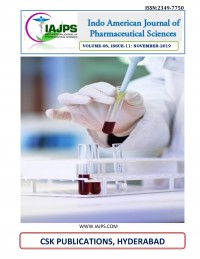
TITLE:
OVERVIEW OF SINUSITIS PATHOPHYSIOLOGY AND MANAGEMENT
AUTHORS:
Khaloud Ali Alghannam, Amira Abdullah Alabbad, Zainab Saleh Almadeh, Rawan Ghazi AlHammad, Aida Ali Abdulwahab, Amal Ali Al Dhamen, Houriah Abdullah Tarmoukh, Zahraa Abdulkarim Alnass, Mehad Ali Al-Awad, Suad Abdullah Al-Nasser, Amal Habib Al Suliman, Suzan Saud Alsaeed1, Faiza Jaafer Alhaider, Zahra Ali Al Obaid, Fedaa Ahmed Al-Zaher
ABSTRACT:
Background: Acute and chronic sinusitis are two distinct forms of sinus inflammation, each with unique characteristics, causes, and treatment approaches. Understanding the differences between these conditions is crucial for accurate diagnosis and effective management. Acute sinusitis is typically a short-term condition often caused by viral infections, whereas chronic sinusitis persists for more than 12 weeks and may not always be due to bacterial infections. Here, we explore the key aspects of acute versus chronic sinusitis. Methods: a comprehensive review of sinusitis pathophysiology and management approch. The PUBMED and Google Scholar search engines were the main databases used for the search process, with articles collected up to 2019. This thorough review ensures that the information presented is reliable and up-to-date. Conclusion: Sinusitis, while common and typically treatable, presents potential complications and associations with other respiratory disorders underscore the importance of accurate diagnosis and effective treatment. Although advancements in medical and surgical interventions have occurred, ongoing research is essential to enhance diagnostic methods and evaluate therapeutic efficacy. The intricate transition from acute to chronic sinusitis, compounded by its heterogeneous nature and multifactorial etiology, underscores the urgency for continued investigation and the development of tailored treatment approaches to optimize patient outcomes. Keywords: Sinusitis, Pathophysiology, Etiology, Pharmacological Treatment, Surgical Treatment.
FULL TEXT
Cover Page














